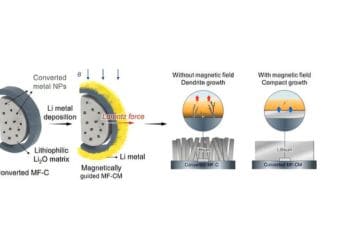- Home
- Others
- Others News
- The future of Multicore computing
The future of Multicore computing
By Indo-Asian News Service | Updated: 5 June 2012 00:41 IST

Click Here to Add Gadgets360 As A Trusted Source

Advertisement
Having reached their peak potential, computer chips are not getting any faster. So chipmakers are configuring additional cores or processing units on a single platform in order to skirt this problem.
Today, a typical chip might have six or eight cores, all communicating with one another over a single bundle of wires, called a bus. With a bus, however, only one pair of cores can talk at a time, which would be a serious limitation in chips with hundreds or even thousands of cores, envisioned as the future of computing.
Li-Shiuan Peh, associate professor of electrical engineering and computer science at MIT, wants cores to communicate the same way computers hooked to the Internet do: by bundling the information they transmit into "packets".
Each core would have its own router, which could send a packet down any of several paths, depending on the condition of the network as a whole. Multicore chips are faster than single-core chips because they can split up computational tasks and run them on several cores at once, according to an MIT statement.
Cores working on the same task will occasionally need to share data but, until recently, the core count on commercial chips has been low enough that a single bus has been able to handle the extra communication load.
That's already changing, however. "Buses have hit a limit," Peh says. "They typically scale to about eight cores." The 10-core chips found in high-end servers frequently add a second bus, but that approach won't work for chips with hundreds of cores.
Peh and colleagues have developed two techniques to address these concerns. One is something they call "virtual bypassing". In the net, when a packet arrives at a router, the router inspects its addressing information before deciding which path to send it down.
With virtual bypassing, however, each router sends an advance signal to the next, so that it can preset its switch, speeding the packet on with no additional computation. In her group's test chips, Peh says, virtual bypassing allowed a very close approach to the maximum data-transmission rates predicted by theoretical analysis.
These findings will be presented at the Design Automation Conference in June in the US.
Today, a typical chip might have six or eight cores, all communicating with one another over a single bundle of wires, called a bus. With a bus, however, only one pair of cores can talk at a time, which would be a serious limitation in chips with hundreds or even thousands of cores, envisioned as the future of computing.
Li-Shiuan Peh, associate professor of electrical engineering and computer science at MIT, wants cores to communicate the same way computers hooked to the Internet do: by bundling the information they transmit into "packets".
Each core would have its own router, which could send a packet down any of several paths, depending on the condition of the network as a whole. Multicore chips are faster than single-core chips because they can split up computational tasks and run them on several cores at once, according to an MIT statement.
Cores working on the same task will occasionally need to share data but, until recently, the core count on commercial chips has been low enough that a single bus has been able to handle the extra communication load.
That's already changing, however. "Buses have hit a limit," Peh says. "They typically scale to about eight cores." The 10-core chips found in high-end servers frequently add a second bus, but that approach won't work for chips with hundreds of cores.
Peh and colleagues have developed two techniques to address these concerns. One is something they call "virtual bypassing". In the net, when a packet arrives at a router, the router inspects its addressing information before deciding which path to send it down.
With virtual bypassing, however, each router sends an advance signal to the next, so that it can preset its switch, speeding the packet on with no additional computation. In her group's test chips, Peh says, virtual bypassing allowed a very close approach to the maximum data-transmission rates predicted by theoretical analysis.
These findings will be presented at the Design Automation Conference in June in the US.
Comments
Get your daily dose of tech news, reviews, and insights, in under 80 characters on Gadgets 360 Turbo. Connect with fellow tech lovers on our Forum. Follow us on X, Facebook, WhatsApp, Threads and Google News for instant updates. Catch all the action on our YouTube channel.
Related Stories
Popular on Gadgets
- Samsung Galaxy Unpacked 2025
- ChatGPT
- Redmi Note 14 Pro+
- iPhone 16
- Apple Vision Pro
- Oneplus 12
- OnePlus Nord CE 3 Lite 5G
- iPhone 13
- Xiaomi 14 Pro
- Oppo Find N3
- Tecno Spark Go (2023)
- Realme V30
- Best Phones Under 25000
- Samsung Galaxy S24 Series
- Cryptocurrency
- iQoo 12
- Samsung Galaxy S24 Ultra
- Giottus
- Samsung Galaxy Z Flip 5
- Apple 'Scary Fast'
- Housefull 5
- GoPro Hero 12 Black Review
- Invincible Season 2
- JioGlass
- HD Ready TV
- Laptop Under 50000
- Smartwatch Under 10000
- Latest Mobile Phones
- Compare Phones
Latest Gadgets
- Huawei Nova 15
- Huawei Nova 15 Pro
- Huawei Nova 15 Ultra
- OnePlus 15R
- Realme Narzo 90x 5G
- Realme Narzo 90 5G
- Vivo S50 Pro Mini
- Vivo S50
- Asus ProArt P16
- MacBook Pro 14-inch (M5, 2025)
- Huawei MatePad 11.5 (2026)
- OnePlus Pad Go 2 (5G)
- Huawei Watch 10th Anniversary Edition
- OnePlus Watch Lite
- Acerpure Nitro Z Series 100-inch QLED TV
- Samsung 43 Inch LED Ultra HD (4K) Smart TV (UA43UE81AFULXL)
- Asus ROG Ally
- Nintendo Switch Lite
- Haier 1.6 Ton 5 Star Inverter Split AC (HSU19G-MZAID5BN-INV)
- Haier 1.6 Ton 5 Star Inverter Split AC (HSU19G-MZAIM5BN-INV)
© Copyright Red Pixels Ventures Limited 2025. All rights reserved.






![[Partner Content] OPPO Find X9 Two Week Experience: Here's Why It Stands Out](https://www.gadgets360.com/static/desktop/images/spacer.png)









